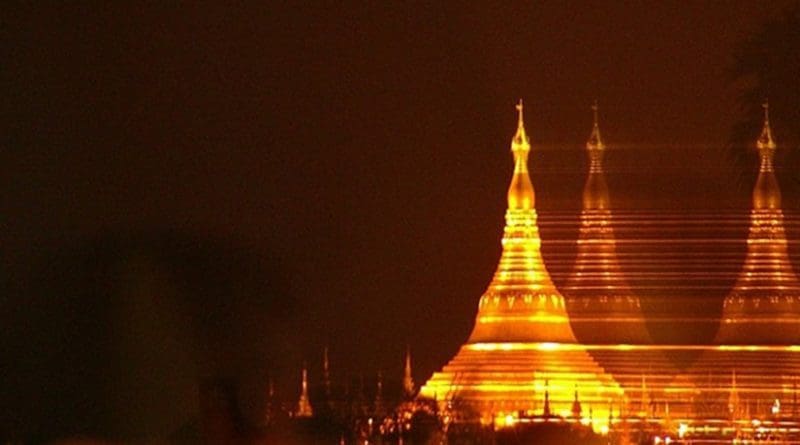The Pangsangh Alliance And Future Of Myanmar’s Peace Process – Analysis
By IPCS
By Angshuman Choudhury*
Between 11-12 November 2017, senior officials from Myanmar’s union government and the Tatmadaw met with the country’s largest Ethnic Armed Organisation (EAO), United Wa State Army (UWSA), and its less powerful ally, National Democratic Alliance Army (NDAA), in their respective autonomous enclaves in the northeastern state of Shan. Both these EAOs are part of the Federal Political Negotiation and Consultative Committee (FPNCC), a new alliance that includes five other non-ceasefire groups, mostly based in the north.
Preliminary media reports suggest that the meeting did not bear any constructive outcome. However, it highlighted certain deep-rooted divergences between the northern groups and the union government that stand tall in the way of a permanent negotiated settlement.
Indications from the Meeting
The crucial meeting came after months of failed attempts by Naypyidaw to arrange talks with the northern groups who have refused to sign the Nationwide Ceasefire Accord (NCA), the premise of the current dialogue process. Earlier this year, these non-ceasefire EAOs broke away from the original alliance of non-signatories, the United Nationalities Federal Council (UNFC), to create the FPNCC – also known as the ‘Pangsangh Alliance’.
Certain issues indicative of the rift between the union government and the northern groups surfaced during the meeting.
First, the FPNCC members want the government to follow its alternative framework for political dialogue enshrined in FPNCC’s charter of principles that was submitted to the government earlier this year, while the government wants them to sign the NCA. This deadlock is not expected to be resolved soon given the government’s staunch insistence government on preserving the union-centric NCA as against the starkly contrasting FPNCC charter, which demands extensive devolution of power to ethnic ‘nations’.
Second, while the government insists on holding talks with the northern EAOs individually, UWSA, who is also the leader of the alliance, wants to engage with Naypyidaw as a single alliance ie FPNCC. The government may not agree on this point easily since opening an official dialogue channel with the FPNCC would mean legitimising the existence of the group, thus giving greater credence to UWSA as a parallel agenda-setter. This would directly impinge on Naypyidaw’s authority and administrative autonomy, particularly the Tatmadaw.
Third, UWSA demands the revocation of the ‘terrorist’ designation slapped on three members of FPNCC – Arakan Army (AA), Myanmar National Democratic Alliance Army (MNDAA), and Ta’ang National Liberation Army (TNLA) – through a motion passed in the Shan State parliament in December 2016. The union government claims to maintain a policy of not negotiating with terrorists, and talking to these groups without revoking the label would be a contradiction for the government. At the same time, revocation could take time since the Shan State parliament is dominated by the pro-military party, Union Solidarity and Development Party (USDP) while the state government is led by the National League for Democracy (NLD). This split could hinder or delay consensus on revocation.
Fourth, during the meeting, UWSA put forward certain demands to the government representatives, mostly related to provision of union funds for public infrastructure, sanction for hydropower projects, and issuance of national ID cards for higher education in Wa-controlled regions. This gives the impression that UWSA is merely using FPNCC, or rather the entire peace process, to forward its own agenda and secure the Wa’s future.
What Must The Government Do?
First, the union government should engage in informal talks with the FPNCC through backdoor channels. This would give Naypyidaw a clear idea about the agendas on the table, including the commonalities and differences, while also not putting an official stamp on the alliance. An effective mediator would be China who is already in direct talks with the northern EAOs. Since Beijing enjoys significant political leverage over these groups, Naypyidaw could instrumentalise its own bilateral relationship with China to arrange back-channel discussions.
Second, the union government and the Tatmadaw must engage with the Shan State parliament on a priority basis to revoke the terrorist label currently placed on AA, MNDAA, and TNLA. These three EAOs, along with the Kachin Independence Army (KIA), constitute the ‘Northern Alliance,’ which maintains a hostile posture on the ground, thus preserving openings for escalated violence. If the government is serious about restoring peace in the conflict-torn north, then it has no other option but to talk to these groups.
Third, Naypyidaw must consider holding national-level dialogues in Shan and Kachin States and including them as core participants in the upcoming edition of the Union Peace Conference. This would not only strengthen the NCA’s credibility, but also bridge some of the trust deficit between Naypyidaw and influential non-signatory groups like the Kachin Independence Army (KIA). In fact, facilitating FPNCC members to consult their own people and inviting them to the union-level dialogue could dissuade them from following an alternative, more radical path.
It remains palpably clear that the peace process is hardly going anywhere. Without the cooperation and compliance of the northern EAOs, there can be no peace in Myanmar. The union government needs to realise this before a fresh cycle of violence begins and the situation spirals out of control.
*Angshuman Choudhury
Researcher and Coordinator, SEARP, IPCS

